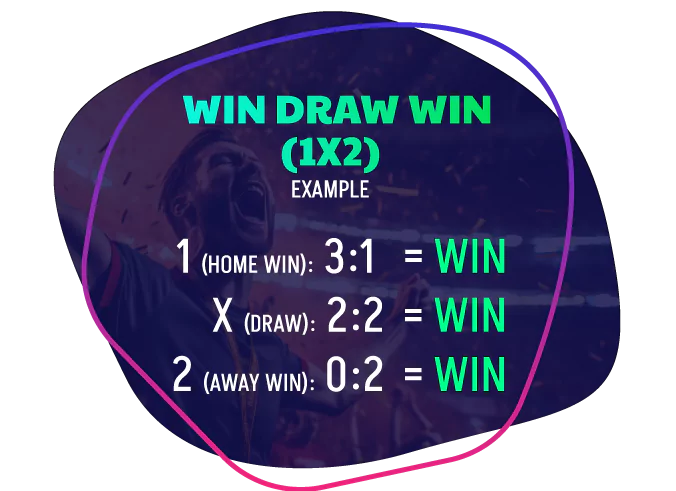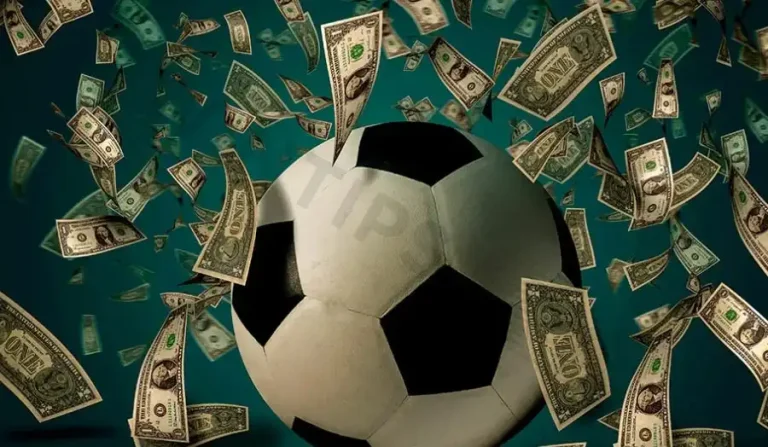
How to Predict Draws in Football
Football is the most popular game in the world, and it is not only a game of passion but also the place where you can find limitless possibilities of the way to bet. One of the most lucrative and one of the most underdog outcomes is a draw, when the teams which take part in a game end up having the same number of goals scored by the end of the game. The trick behind making consistent profit on the most popular sport could be through the ability to combine football predictability.
But there are other methods of predicting a draw other than guesswork; a multiple piece puzzle that takes into account information, team interactions, tactical intelligence and in some instances, the intuition. In this guide, therefore, I would shed some light on how I could go about addressing that puzzle and better and more rational in my predictions.
Knowledge about the Basics of Match Results
What does Draw mean in Football?
What it means in the context of football is that a draw is when both teams finish with the same goals that each of them made (in short, it might be 0-0, 1-1, 2-2 and so on). It is represented by the letter X in the popular 1X2 market in which:
1 = Win at home
X = Draw
2 = Away Win
The Power of Draws Forecasts
Most people trying to win bets either want to go with singles or lower odds whereas the sharks understand that the draw odds tend to be between 3.00 to 3.50 (decimal) and their value is higher. As soon as you are able to guess even a little bit better than randomly on the draw you are in profitable ground.
Important Considerations That Can Make a Draw in Football
Defensive Team Set-ups
Teams such as clubs which implement the park-the-bus tactics or a five-man-back do so with minimal risk which in most cases results in low-scoring draws.
Missing Attacking Plan
Teams that lack their attacking forwards or that play with heavy midfield formations may fail to score when they have opportunities and this will favor a draw.
Similarly-matched teams
In case of similarity of form, level and playing style of two sides, in particular derbies or rivalries, a draw is statistically likely.
Past Performance and Head to head analysis
Significance of historical data
Taking a glimpse into the results of the last 5-10 matches between the two teams may notice a tendency, the game sometimes ends with a draw more often than others, as there is some stylistic or psychological reason.
The analysis of Draw Patterns Between Teams
Apply this list:
Are both the teams averaging less than 1.5 goals a game?
Do they currently have tie or nil games?
Are they congested in the recent fixtures (resulting in lack of energy)?
The higher the number of yes answers (two or more), the more a potential draw hotspot.
Team Form as a Method of Finding Potential Draws
Recent matches Results
A team that has gone undecided a number of games straight or has moved back and forth between small losses and small victories is bound to a close one statistically.
Analysis Performance of Home and Away
Draws are almost as likely to be made as:
The host is a defending prowess but weak in the scoring area.
The visiting team is persistently digging points.
Find out mid-table teams who are inconsistent and resilient.
Tactical Analysis and Managerial Styles
Defensive Managers
Put the name of Diego Simeone (Atletico Madrid) or Jose Mourinho–coaches with a clear preference of structure over spectacle. Their teams run low-risk on their encounters most of the time.
Midfield-Dominant Formations
Most of the midfield would be congested with formations such as 4 5 1 or 4 2 3 1 and sometimes chances would not be created at all and they would draw most of the time.
Conditions of Weather and Pitch
Effect of Rain, Snow or Bad Pitch
Muddy or slippery surfaces are able:
Decelerated attack transitions
Peruse technical mistakes
Prefer defensive arrangements
That is why matches or games during winter or in rainy climates experience more draws, particularly, the lower divisions or leagues.
Neutralising Attacking Advantage
Even the most killer strikers will be neutralized on a rough or wet pitch, creating an equalizing force to the game and lowering the goals margin.
Motivation and Levels of Psychological Factors
The significance of Motivation in Match Outcome
Some teams have no reason to win, or lose and can therefore accept a draw consciously or unconsciously, particularly at the end of the season when teams that are mid-table have nothing to gain or lose.
End-of-season games or Mid-Table Games
Low-stakes matches are draw-oriented because of the lower intensity. Quite the opposite, relegation or top-four battles are the stage of aggressive play and reduced number of draws.
Country-Specific Patterns and Leagues
High Frequency Draw Leagues
Competitive balance or tanking More leagues are prone to drawing because of competitive balance or a hall of conservatism. Top examples:
France: Ligue 1
Portuguese Primeira Liga
Top Five European Leagues 2008-2009, Comparisons.
| League | Draw (% avg) |
| Ligue 1 | 27% |
| Serie A | 24% |
| Premier League | 22% |
| La Liga | 23% |
| Bundesliga | 21% |
The figures give you the place where draw betting thrives.
Betting Odds in Predicting Draws
Draw Odds Interpretation
The norm of the bookmakers is 3.00-3.50 draw odds, depending on the quality of the league and teams. When the odds start to move above 3.80+, then the market anticipates that a winner will emerge–reliant, however, on the likely underestimation of draw value.
It is possible to determine Value Bets.
Value = (Estimated Probability Odds) 1
And if it is >0, then you have a value.
E.g. when your study provides 30 percent chance of draw and odds are 3.60:
((.30) (3.60) )-1 = .08 ( a positive expected value)
How to use football prediction models and algorithms.
xG Models and Poisson Distribution
The Poisson model estimates probability of goals with historical averages of the goals. In the event of both teams:
xG<1.1
< 1.2 xGA
Its probability of draw can be above 28 percent depending on like a 0-0 or 1-1 result.
Constructing Your Model of Prediction
Either use Excel or Python:
Data: past scores, xG, home, away form
Output: the predicted probabilities of 1X2
Include fatigue, red cards and injury conditions
Ordinary Blunders to be Prevented in Forecasting Draws
Overdependence on Gut Feeling
Intuition can play as an occupational role but betting purely because a team has a hunch as compared to betting due to some data to prove the point is a losing bet in the long run. The Gambler’s fallacy is held by many punters who incorrectly think that a draw is overdue in the event that a team has not drawn in a while.
Disregard of Key Data Indicator
Avoid ignoring:
xG (Expected Goals) facts
Reports on injuries in the team
Bias of the referees (some refs tolerate the physical action more, resulting to a draw)
Every small piece of data counts, so develop a habit of making a knowledgeable forecast.
FAQs
1. Is draw betting a long-term profitable bet?
Yes, but when they are researched and when they are disciplined. Draw odds are very well paid, but you have to have a high hit rate to support the variance. A strategy that is between 30-35 percent successful is profitable.
2. When is it the best time to bet on draws?
Preferably, an hour or two before the kick-off when the team news is released. Alternately, with the first 15 minutes of any game bet on an in-play draw should both teams be evenly matched.
3. Is it easier to predict that 0-0?
Less common, but easier to foresee they are teams having no firepower, or being ultra-defensive. Guide such bets using xG data and the team motivation.
4. Is the betting on draws an automated process?
Yes. Using Python or Excel you can create a bot or a spreadsheet.
Fetches odds
Stays in recent form
Points possible of draws.
5. What are the best leagues to draw bet on?
Some of the best leagues to draw are;
Estados Unidos.
Italian Serie B
Championship (England)
Primeira Liga (P)
They are close-scoring and narrow margin leagues.
6. What does Stakevilla contribute in prediction of draws?
You will find at stakevilla:
Weekly draw tips prediction
Tactical breakdowns
Match Preview based on Stat
Resources of the betting academy
It is your source of quality, reliable and constant success in football predictions.
Conclusion
There is a way of making predictions on draw matches in football that most punters overlook in favor of the complex skills on bet prediction. Using the right tools, researching habits, and knowledge of team dynamics, you would be able to get into one of the most overlooked betting markets out there, football.
Remember:
Play leagues with and teams that draw.
Make use of statistical models to provide objective analysis.
Track morale, weather and battle dispositions.
Keep records of your predictions and become better as time goes by.
Our work at Stakevilla is to provide you with more information to make you a winner in not only in the bets, but also to make you more knowledgeable on the game of football.







